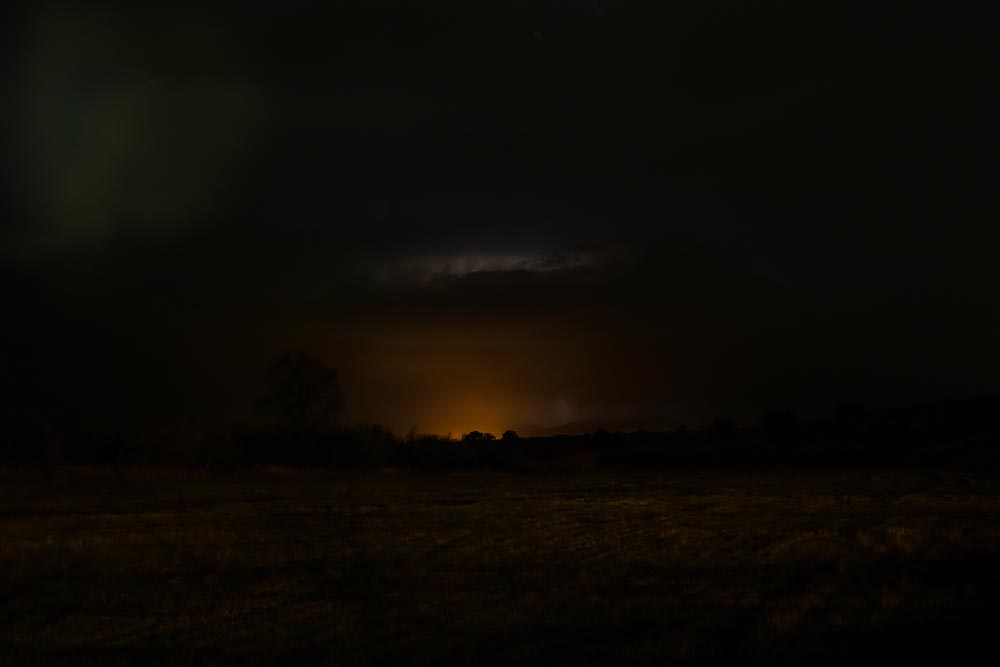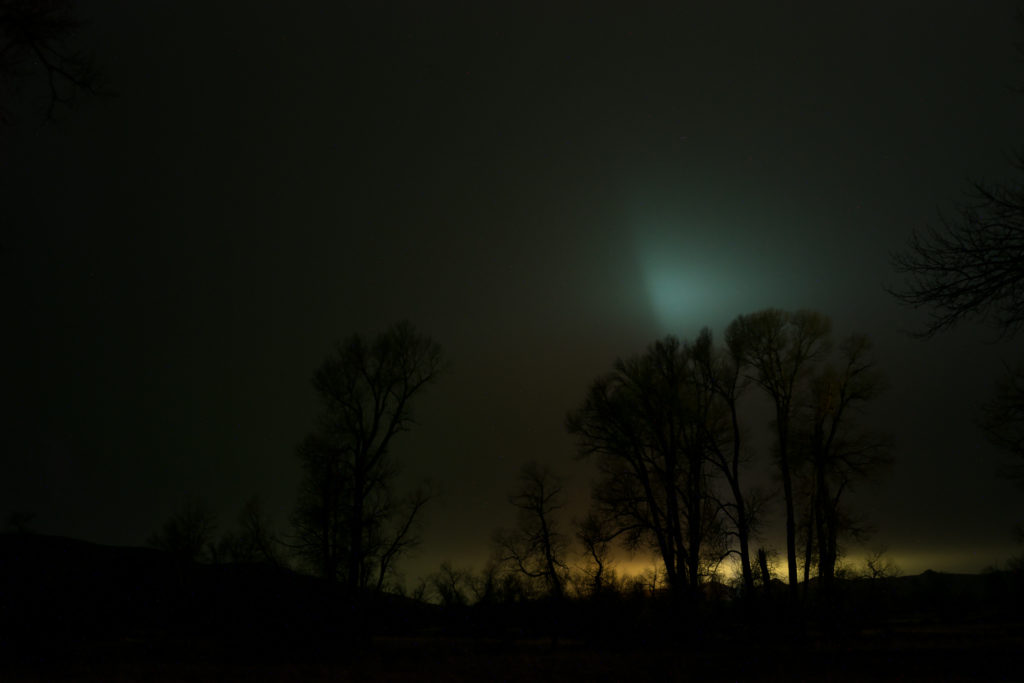
“West: Lost World,” is a collaborative interdisciplinary project using photography, music, fiction writing, presentations, and apps to document the changing landscape of the West due to energy development.
Description and Purpose of Proposed Activity For Marion Fellowship
The West’s spectacular energy boom has finally gone bust. And with fuel prices declining, the dream seekers are departing, leaving the landscape irrevocably scarred.
“West: Lost World,” is a journey exploring this changed land. Using photography, music, fictional text, presentations and apps, I will tell the story of the impact of oil, coal and gas production in Western wilderness areas. The approach is interdisciplinary; the voice personal and poetic; the photos, music and reading to be presented as salon-type performances in the communities I visit. Inspired by the Chautauqua Institute, I’d like to share ideas and culture with the community, using my personal journey through the landscape of the West.
The photographic trip includes visits to three key energy producing centers of the West: Wyoming’s Powder Ridge Basin, the Bakken oil fields of North Dakota and Canada’s Athabasca Oil Sands. My focus will mostly be the landscape at night, where atmospheric light paints a haunting evocation of human alienation.
As part of the collaborative approach, the project also includes commissions of an original musical composition by noted composer (a previous Ucross fellow), and a short story written (also a Ucross fellow), both of whom will use the project’s themes as inspiration. The photos, musical performance and short story reading will be presented in collaboration with Circle members and local Western communities. Other possible venues include those in Aspen, Denver, Laramie (University of Wyoming), Minneapolis (The Loft Literary Center), New York (The Secret City/Dixon Place), and Philadelphia.
Collaborating with the Alberta College of Art and Design (and at the State University of New York at Fredonia, if possible) includes a diverse range of community activities. I plan on offering a workshop on night picture making and the personal approach to environmental photography; a talk on my creative process and presentation of my work; a trip with students to photograph along the Bow River (or along Lake Erie if at SUNY Fredonia); and a brief workshop on new narrative, creative and photographic possibilities of apps. Involvement could include several departments, such as Photography, as well as Critical + Creative Studies, Print Media and Media Arts at Alberta. Since I’ve exhibited my work at the Art Gallery of Winnipeg, I will reach out to Alberta curators and galleries, including Contemporary Calgary, and Glenbow and will also try to schedule talks at other community and arts groups, such as Calgary Arts Development. While in Calgary, I’ll photograph along the Bow River, the downtown energy offices, and industrial areas at night..
An additional way the project engages with the community is through the apps Instagram and Snapchat. They will be used to share images of the project as it unfolds in real time, develop new creative storytelling possibilities and allow for feedback and comments from viewers. The apps allow the project to reach new local, national and international audiences.
As a follow up to the project I will exhibit about 15 40×50” prints in galleries and museums. I have a working relationship with the photography gallery ClampArt, as well as with several other dealers and curators in New York, Wyoming, Colorado and in Europe and Canada (Circle members might be possible exhibition venues). This is a continuation of a long term project of night landscape photographs taken in Wyoming, Manitoba, and Newfoundland, Canada. This project continues with a new grant to travel and photograph Greenland’s changing environment.
Steve Giovinco’s Artistic Practice
Photographing at the edge of inhabited places where traces of artificial light reveal evidence of people or towns in the distance, I capture what it feels like to lose myself in these remote landscapes. Inspiration comes from cinema, including the work of directors such as Michelangelo Antonioni, whose films use the landscape to evoke human alienation, and from Hudson River painters such as Frederic Edwin Church, where atmospheric light invokes complex emotional states.
Working at night requires exposures of an hour or more, making it impossible to see through the camera’s viewfinder. Instead I stand beside it “feeling” the image and intuitively framing it in the dark. By allowing my own thoughts and fears to be part of the creative photographic process, I make a visual representation of this unfolding emotional experience, and try to capture mystery.
Energy Environment of West

The impact of oil, coal and gas production in wilderness areas is striking. Mostly in the form of surface or open-pit mining, 40% of US coal comes from the Powder Ridge Basin in Wyoming where ten mines operate; Bakken and Canadian oil sands boomed until recently, creating massive changes to the towns, environment and people. “Gillette Syndrome,” coined in the 1970s, describes the impact of this rapid development. But what happens when the boom busts? “West: Lost World,” focuses on the environmental aftermath–what it looks like, and more importantly, feels like.
Outline of Creative Journey Path, including Proposed Timetable
My planned creative journey will be in two sections. In the Fall, I will photograph the Athabasca oil sands and visit the Alberta College of Art; in Spring, I will travel to Ucross, Gillette, Wyoming, and the Bakken in North Dakota. The dates are very flexible, and could change depending on Circle member’s schedules or other factors.
- Commission of music composition: June
- Commission of fiction short story: June
- Chautauqua Theme Week: Late July
- Athabasca oil sands: September
- Alberta College of Art*: Early October
- Gillette coal fields: Late February
- Ucross Residency (and some trips to Gillette): March
- Bakken fields in North Dakota: April
- Presentation at SUNY Fredonia: October, or May
- Post Project Photo Exhibitions: TBD
*The project, although possibly partially completed, could be presented with the photographs up taken until that point, or presented later when the project is complete, or both.
Description of How the Activity Addresses the Goals of the Marion Fellowship

This interdisciplinary and personal journey will foster deeper connections among the Circle members of the Alberta College of Art and Design, Ucross, and SUNY Fredonia in a variety of ways:
- The salon-type performances will be presented at Circle members locations as well in the Western energy communities and schools that I visit, connecting with a variety of people.
- By conducting workshops and talks, I will work directly with students, artists, and local communities, involving various school departments and venues.
- The project’s interdisciplinary approach will develop a greater understanding of the range of creative opportunities and mediums available for artists to express themselves.
- Students or local performers will be directly involved in playing the music, reading the short story, and could run the salons.
- The musical composition and short story commission will be a direct collaboration with previous Circle members fellows.
- The salons at Alberta College of Art and Design, Ucross, and SUNY Fredonia, and other venues (and perhaps at multiple times), will bring additional awareness to Circle members and the work they do.
- The apps Instagram and Snapchat offer additional engagement with local, national and international communities.
Borrowing from Chautauqua Institution’s goals, I’d like to share ideas and culture with the whole community. The theme which most closely matches my project is, “People and Environment In Partnership with National Geographic Society,” and I hope to focus and expand on some of the ideas such as how do we survive in a natural world we are increasingly out of touch with, how has our sense of surroundings changed, and what how do we prepare for the future. My goal is to offer a creative interpretation to some of these questions.




Comments are closed.